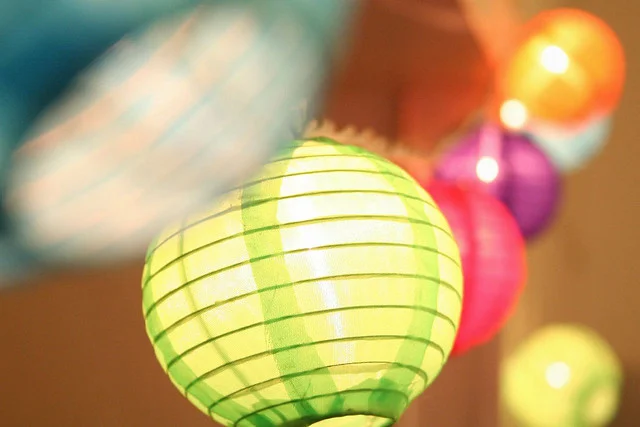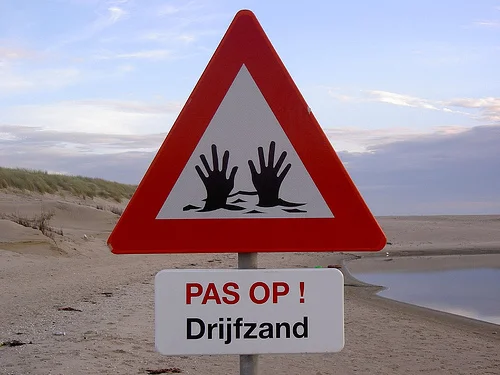“When a writer is feeling blocked and hearing inner messages like, ‘You should be writing right now!' or 'What do you think you're doing, taking off in that crazy new direction? You should stick to what you've always done!’ it’s an automatic clue that the Inner Critic is pouncing,” she says. "You can identify when the stinker is functioning inside you because it’s always going to have emotional pain attached.”
That’s what the Inner Critic does, she explains: It leads you to feel bad about yourself with five different emotional punishments. Its negative messages make you feel:
* Defective: “Who am I to think I’m a writer? I’m no Cheryl Strayed/George Saunders/Marcel Proust/Pablo Neruda/hot writer of the moment. I’m deluding myself to think I’ve got what it takes. I’m a C-level writer at best.”
* Ashamed: “Everyone can see I’m not producing like should. What I’m writing is garbage. How am I going to show this to anyone?”
* Guilty: “I told my editor/writing group/coach that I’d have these pages ready in a week, and I’m nowhere near finished. I haven’t lived up to what I said I’d do. I’m a terrible person.”
* Inferior: “My colleague has produced two or three pieces and I’m still struggling through this one. It’s obvious: I’m just not as good as he is.”
*Anxious (filled with magnified fears): “I’m not going to make it as a writer. Everyone will see me as a failed artist, that screw-up with the fantasy that someone would like or buy this crap.” Anxiety, Kathryn says, is predicting disaster for the future—expecting that all your plans and dreams will fail. And there’s no way to feel creative or productive with that “certainty” circling in the background.
But there’s relief….
The good news, she says, is that “if you can identify any of those emotions arising around your writing, you can label them: ‘Oh, that’s my Inner Critic, not the truth.’ And once you’ve identified this negative influence, you can do this wonderful thing: Accept your humanness.
“You can say: ‘I’m not a perfect writer creature. I’m a human who has certain gifts and interests and talents, but I’m human. I’m not a perfect robot of a writer,” she advises. “Once you can say that, you will be relieved of that inner turmoil. Your self-acceptance will rise. When you’re in that relaxed, freer place, you’ll be able to access the talent and vitality that’s in you for writing, and you’ll be able to deploy the gifts inside you once again. It’s an essential thing to do if you’re going to be a writer.”
'Am I going to take orders from an inner tormentor? Or follow more positive guidance?'
“Stuckness,” she says, “is a clue that you’re in a hypnotic trance induced by your Inner Critic. Thinking that you could be super-human is another part of the trance state that the Inner Critic induces in us when it’s being installed in our lives. We start buying into perfectionism from the time early on when a powerful person in our lives demands it: 'Look at you! Your shoe is untied. You got ice cream on your shirt. That won’t do. You should look perfect.’ We’ve been indoctrinated by voices and thoughts like this.”
Inner Critic perfectionism, she says, “occurs through a welding of our executive selves to our Inner Critic. When we’re fused psychologically, it seems true it that we should be perfect—and that we should be able to reach perfection.”
“Breaking free of all this is simpler than you think,” she says. “It takes a fundamental values shift. ‘What am I going to guide my life by? Orders from an inner tormentor who cracks a whip over me about how I live each day? Or more positive inner guidance?’ That’s everyone’s decision to make.
“You may say, ‘I like that my Inner Critic gives me a kick in the butt.’ We say: If you want emotional torment, have at it. But realize that it takes a toll—alcoholism, drug abuse, Internet addiction…. Because you have to anesthetize the inner pain that comes with listening to the Inner Critic.”
Challenging the Inner Critic, step by step
If you’re ready to get out the lightsabers and challenge the IC, Kathryn suggests these steps as a starting point:
1. Identify the specific “shoulds” that the critic is instilling in you. Those are things like: “You should be writing five hours a day (or you’re not a real writer).” “You should be inside working instead of spending time with your friends.” “Your work should be better/faster/more polished the first time out.”
Take a pen and paper and start writing out the shoulds circling in your head: “Jane, you should plant your butt in the chair at 5 a.m. if you ever want to write a novel.” Make a list. There will be one should after another.
'At some point, we have to come out of our obligated, "good little person" trance.'
2. Choose just one of the shoulds and realize what it’s saying: You don’t have the right to be human in the way you are. The Inner Critic says you don’t have any rights at all. And your task is to get free by saying, “I’m not buying that. I have the right to be who I am.”
“At some point, we have to come out of our obligated, 'good little person' trance,” Kathryn says, “thinking we have no rights in our own minds and personalities.
“So say aloud to your Inner Critic, ‘I have the right to not write five hours a day’ (or whatever your Critic is demanding)." Or "I have the right to write an escapist novel about singing cowboys instead of a tragic memoir I once told someone I was writing."
This is a private conversation between you and your IC, not your editor. You’re having it to get free from an inner tyrant. Tell it: “I have the right to write whatever I want, whenever I’m good and ready. I can write one sentence or many, and I’m still a good person. I have the right to write crap.”
“When I was working on my Ph.D dissertation,” Kathryn says, “I’d get blocks. I’d say, ‘I don’t see how I’ll ever get it done. My husband Jim told me, ‘Just sit and write garbage. Write “bla bla bla bla bla.” You’re typing a declaration of independence. You have the right to write one sentence, or even one word.’
"As you make the choice to write what you want, you’re moving in the direction of freedom from an inner bully that blocks your creativity and gifts."
You ain’t seen nothin’ yet!
This whole business of addressing the Inner Critic aloud, of saying, “I have the right to write what I want, the way I want,” may sound silly to you. But I can tell you from my experience that it feels great to start rebuilding your writing life from your own real choices and preferences instead of the Inner Critic’s rules, admonishments and fears.
I got a tremendous sense of liberation from one of the exercises Kathryn and Jim developed, a slightly longer version of asserting your rights called YASNY, for “You ain’t seen nothin’ yet!’
You can take your Inner Critic out of the executive chair and put yourself there.
If your Inner Critic is berating you for not writing like one of your idols, try saying: “I have the right to write garbage. And you ain’t seen garbage till you see what I can write! I can dump it till the cows come home!”
Most people playing with YASNY, Kathryn says, throw back their heads and laugh because it feels so good to assert their freedom and defy the Inner Critic instead of deferring to its judgments.
Saying: “I have the right” is like buying a fishing license, Kathryn says. You can fish or not. You can get up at five and write because you want to try it. Or you can assert your right to do something different. “You’re saying: “I own the executive power in my own life,” she explains. “You’re getting your Inner Critic out of that executive chair and putting yourself there.”
The question to keep asking as you invent your writing process your way is: “Does this make me feel more alive, or is it a response to a punishing feeling?“
“When you declare your independence from the Inner Critic and say, ‘I have the right to live my life the way I want to, to write the way I want,' you open up a world that is your natural self, the part of your personality that’s full of aliveness and creativity,” Kathryn says. “We see it in toddlers running through the house. That vitality is unadulterated humanity. That’s what you’ll feel like—what your writing will feel like—if you’ll start tapping your own natural self.”
You can find out more about Kathryn Elliott and her Inner Critic work at her website, antheticpsychology.com. The book she wrote with Jim Elliott, "Disarming Your Inner Critic," is full of techniques for taking on the voices that stop us.
(Photo by xddorox via Flickr.)












